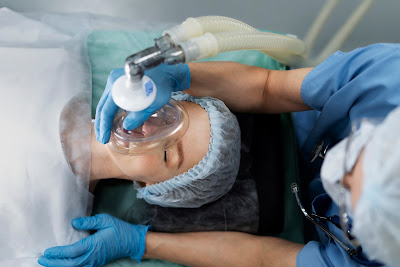The Significance of Online Fellowship Programs in Enhancing Patient Survival Rate in Emergency Situations
A Multi focal Medical Perspective by MedVantage In the realm of healthcare, the ability to provide timely and efficient critical care in trauma and emergency situations is paramount. These situations often arise suddenly and require swift, expert intervention to maximize the chances of patient survival rate and recovery.
1.Expedited Medical Evaluation: The first step in providing critical care in trauma and emergency situations is a rapid and accurate assessment of the patient's condition. Healthcare providers must quickly identify life-threatening injuries or illnesses and prioritize interventions accordingly. The primary survey (ABCs: Airway, Breathing, Circulation) is essential to ensure that the patient's vital functions are stable.
2.Hemodynamic Control and Maintenance: Once the initial assessment is complete, the focus shifts to stabilizing the patient's condition. This may involve interventions such as securing the airway, providing oxygen or mechanical ventilation, controlling bleeding, and administering medications to support blood pressure and heart function.
3.Medical Team Coordination: Effective teamwork is crucial in trauma and emergency care. A multidisciplinary team, including physicians, nurses, paramedics, and other healthcare professionals, must work together seamlessly to provide the best possible care. Clear communication and well-defined roles are essential.
4.Medical Imaging for Diagnosis and Evaluation: Diagnostic imaging, such as X-rays, CT scans, and ultrasounds, plays a vital role in assessing and diagnosing trauma patients. These tools help identify injuries, fractures, and internal damage, enabling healthcare providers to make informed decisions regarding treatment.
5.Medical Hemostasis and Bleeding Management: Hemorrhage is a leading cause of death in trauma cases. The prompt control of bleeding is essential to prevent further deterioration of the patient's condition. Techniques like direct pressure, tourniquets, and hemostatic agents are used to manage hemorrhage.
6.Pain Control and Analgesia: Trauma and emergency patients often experience significant pain and discomfort. Effective pain management is essential to reduce suffering and improve patient cooperation during procedures and treatments.
7.Fluid Resuscitation: Intravenous fluids are administered to maintain blood pressure and ensure adequate perfusion of vital organs. The choice of fluids and their administration rates must be carefully tailored to the patient's condition.
8.Surgical Intervention: In some trauma cases, surgical intervention may be necessary to repair internal injuries or fractures. Surgeons may need to perform life-saving procedures, such as exploratory laparotomy, to assess and treat intra-abdominal injuries.
9.Critical Care Units: For patients with severe trauma or those who require ongoing intensive care, transfer to a specialized critical care unit, such as an ICU or a trauma center, may be necessary. These units are equipped with advanced monitoring and life-support equipment.
10.Rehabilitation and Long-Term Care: Once a patient's condition stabilizes, the focus shifts to rehabilitation and long-term care. This may involve physical therapy, occupational therapy, and psychological support to help the patient regain function and quality of life.
In conclusion, providing Fellowship in Critical Care, helps in trauma and emergency situations is a complex and multifocal endeavor. Swift assessment, efficient stabilization, and a coordinated approach are essential to improve patient outcomes. Healthcare professionals in these settings must be well-prepared, trained, and equipped to deliver life-saving interventions to enhance our ability to save lives in these high-stress situations.




Comments
Post a Comment